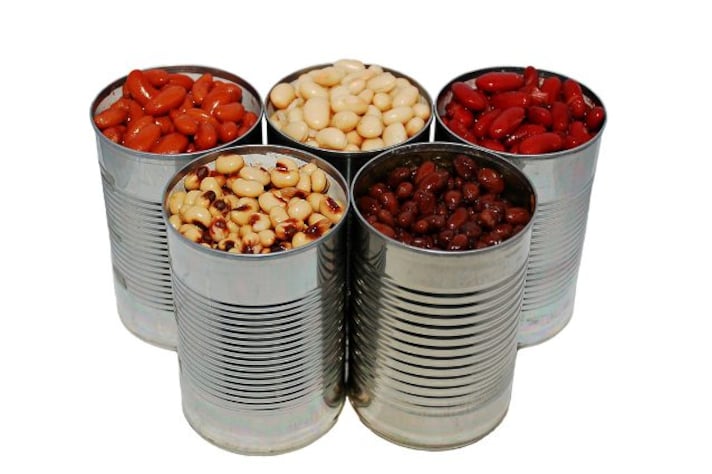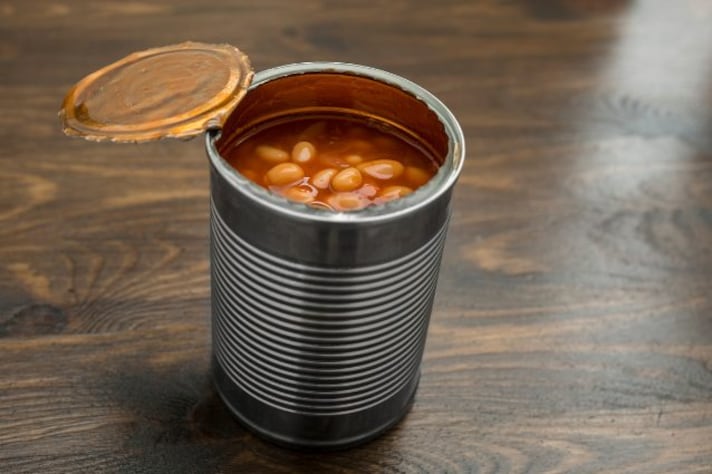Why You Should Never Buy Canned Beans at the Grocery Store (And What to Buy Instead)
Think canned beans are convenient? Think again. Here's why you should skip the canned variety and choose healthier, tastier alternatives when it comes to your beans.

There’s no denying the convenience of canned beans. You grab a can off the shelf, pop it open, and in minutes you’ve got the start to a quick meal. But just because something is easy doesn’t mean it’s always the best choice. Canned beans may seem like a pantry staple, but more often than not, they’re doing you more harm than good. Whether it’s nutrition, taste, or sustainability, there are several reasons why you should never buy canned beans at the grocery store. Let’s break it down.
What’s Really in That Can?
If you’ve ever taken a closer look at the label on a can of beans, you’ve probably noticed a laundry list of ingredients beyond just the beans themselves. Sure, beans are typically the star of the show, but preservatives, added sugars, and extra salt often sneak in without you noticing. Sodium, in particular, can be a major concern—many canned beans pack over 1,000 milligrams of sodium per serving, which is nearly half of the daily recommended intake.
While a small amount of salt can be harmless, those preservatives and excess sodium can have long-term health impacts. Regular consumption of too much salt is linked to high blood pressure, kidney disease, and even heart problems. So, while you’re going for convenience, you may actually be doing your body a disservice.
Why Canned Beans Fall Flat
Let’s be real for a second: canned beans don’t have the best flavor. Sure, they’re edible and get the job done in a pinch, but they often taste flat or metallic—especially when compared to freshly cooked beans. That tinny taste? It’s not just in your head. Canned beans often sit in the can for months before they’re eaten, which doesn’t exactly enhance their flavor. When you cook beans from scratch, they absorb the seasonings and spices you add, creating a more flavorful and vibrant dish.

If you really want to elevate your meal, there’s no comparison between the fresh flavor of home-cooked beans and the muted taste of canned ones. In fact, cooking beans yourself gives you full control over how much salt and spices you use, so you can make your dishes as flavorful as you like.
Why Canned Beans Aren’t as Green as You Think
We’ve all heard about the environmental impact of single-use plastics, but it’s not just plastic straws and water bottles that contribute to the problem. Canned goods, including beans, come in metal containers that are often coated with BPA (bisphenol A)—a chemical that can leach into food and pose potential health risks. Though some manufacturers have moved away from BPA, many still use it in their cans, meaning you’re still exposed to harmful chemicals.
Additionally, the canning process requires a significant amount of energy, both for producing the cans and the actual canning process itself. When you consider that beans are available in dried form (which is far lighter and requires less processing), it’s clear that canned beans aren’t the most eco-friendly choice. So, if you're concerned about your environmental footprint, it might be time to ditch the cans and opt for more sustainable alternatives.
Canned Beans Aren’t As Cheap As You Think
While canned beans may seem like a budget-friendly option, they’re actually a lot more expensive than you might realize. When you compare the price of canned beans to dried beans, the cost difference is significant. A bag of dried beans can cost a fraction of what you’d pay for a few cans, and it will yield far more servings. Additionally, dried beans have a much longer shelf life, meaning you’re less likely to waste them before they go bad.

And let’s not forget the added cost of the can itself. Packaging—whether it’s plastic, metal, or cardboard—adds to the overall price of the product. By switching to dried beans, you’re not only saving money but also reducing the amount of packaging waste in your home.
How to Cook Beans Without the Cans
So, if you’re tossing the cans, what should you do instead? The good news is that cooking beans from scratch is easier than you think. Dried beans require very little prep—just a quick soak overnight (or a fast soak method if you're pressed for time), and then they’re ready to cook. Once they’re soft, you can add whatever seasonings you prefer, from garlic and onions to smoky chipotle or savory herbs.
If time is an issue, you can always cook a big batch of beans and freeze them in portion-sized containers. That way, you’ll have homemade beans on hand whenever you need them, without the added preservatives or flavor disappointments.
;Resize,width=767;)
;Resize,width=712;)
;Resize,width=712;)
;Resize,width=712;)
